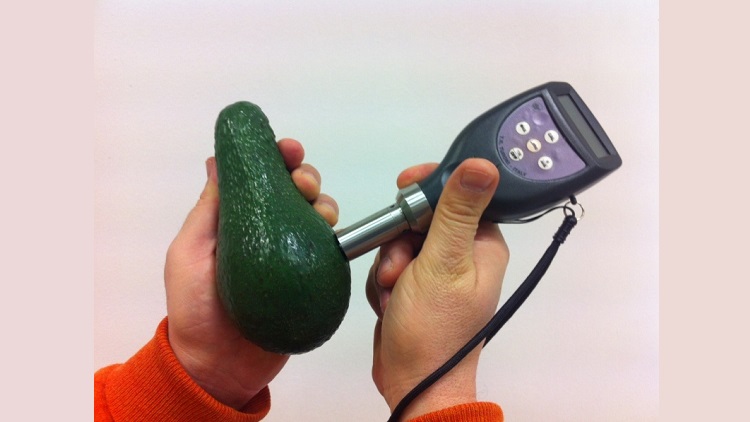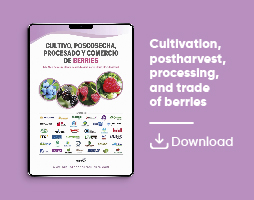
T.R. Turoni
Measurements
DA-Meter, non-destructive fruit quality control tester

The DA-meter, by T.R. Turoni, is an instrument that, by means of his absorbency properties, allows to measure the chlorophyll's content in a fruit.
The content in chlorophyll in a fruit is a precise index of a fruit's ripening state. Thus, the DA-meter allows to know the ripeness state, and the way it works is unrelated to weather, a factor which influences other kind of measurement such as the brix index.
The DA index, measured with the DA-meter, is useful at many stages in the production and consumption's cycle of fruit.
In fact it can be used:
- By the farmer, in order to optimize the trees' pruning, to obtain a very homogeneous product and, as a result, to reduce the number of picking stages;
- By the farmer, during the harvest-time, in order to identify the best moment for the picking and to select samples for the distribution at the staff picking up the fruit;
- At the storekeeper, in order to know the maturation state of the stored fruit and to know, at any time, what is the shelf life that the product is supposed to have;
- At the retailer, in order to buy products at the intended maturation level;
- At the retailer, in order to select the most ripened product to sell.
The D-A MeterThe DA-meter is a portable instrument for the measurement of the DA index in laboratory and on the field.
This equipment combines simplicity of utilization to good quality of taken measures, and enables either to make immediately use of the obtained data or to store them for a future employment. To that extent, it is provided with a SD Card (having a maximum capacity of 2 Gbyte, which is enough to store a quantity of measures absolutely bigger than the real necessities), and with a USB interface which enables linking to a computer immediately.
DA Index
DA Index is an index of the quantity of chlorophyll in a fruit and, as a consequence, of his ripeness state. This index decreases in value during the ripening process of the fruit, until it reaches very low values when the ripening is complete.
Each kind of fruit has specifics DA values according to the different phases of maturation. These values are unrelated to factors such as weather and temperature.
Reference indices for the most popular typologies are available on the web site, that is continuously updated with data which are taken about new varieties.
DA index is in opposition with the saccharometric degree measure and the pulp hardness measure; it provides a different measurement which is essential for a correct harvest.
Outsanding features of the DA Index
The most relevant features of the DA index are:
1) It is not dependent on the season course. The climatic conditions have indeed an influence on some parameteres, such us the saccharometric index.
The average content in sugar is bound to be high, in favourable years, even before the fruit reach the correct ripeness level. On the other hand, bad climatic conditions in specific seasons will prevent fruit to reach an high sugar level even at complete ripeness. As a consequence, the saccharometric index is able to reveal whether a fruit tastes good, while the DA index allows to know when the fruit, either good or bad tasting, has actually reached the optimal ripeness level.
In favourable years, the only consideration of saccharometric indications would anticipate the harvesting too much, having the effect of picking up fruits which is sweet but not as sweet as could be if picked up at the optimal ripeness point. A bad season, at the opposite, the harvesting would be postponed too much, with negative implications in terms of preservability and storability, and without having reached anyway a satisfactory sugar level.
By using the DA instead, it is possible to always pick up fruit at the optimal ripeness level, that is, when the fruit reached the best sugar degree possible before damaging preservability.DA index varies along with the whole fruit life cycle. Measurable variations are available during the whole life of the fruit, including storage.
This allows the DA index to provide a reliable indicator of fruit ripeness already long time earlier than the moment of picking up, and to continue monitoring the ripeness even after that moment, in the refrigerator and even at the moment of consumption.
At the opposite, the consistency of the fruit pulp could tend to remain almost unchanged up to the moment of consumption, while some typologies tend to reach their final colour much earlier than the optimal harvest time, thus not providing a reliable indicator of the ripeness stage of the fruit itself.
2) The obtainment of the measure is neither destructive nor traumatic; it is possible to get measures also directly on the plant by means of a portable, light instrument which is very practical and simple to use.
3) DA measure can be obtained also in a line, thus guaranteeing an optimal distribution of products for storage and for delivery.













